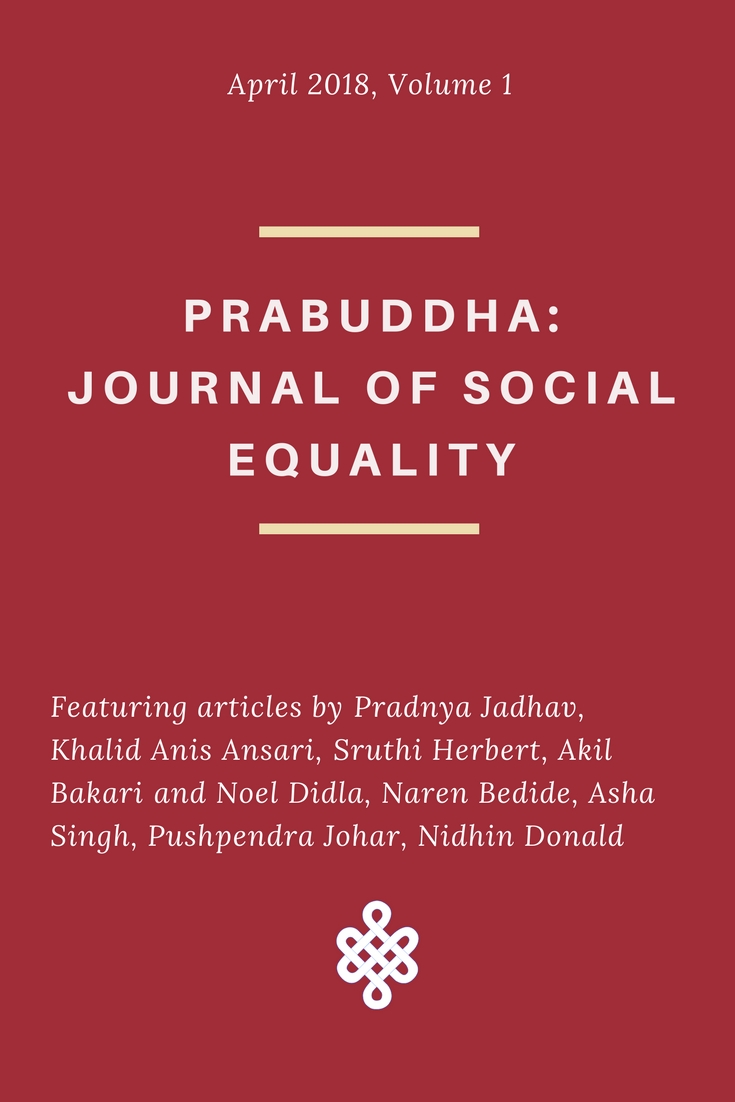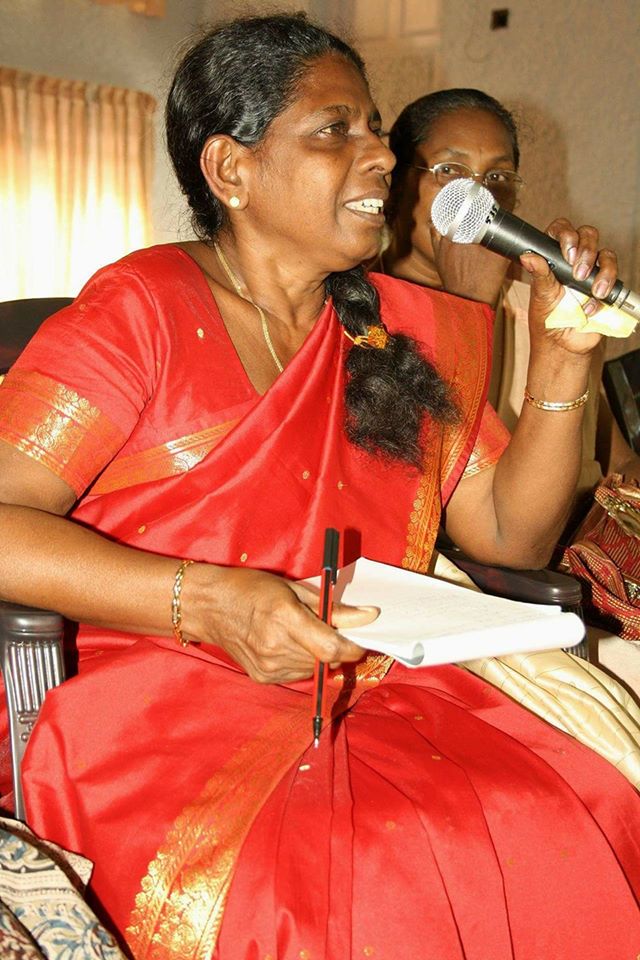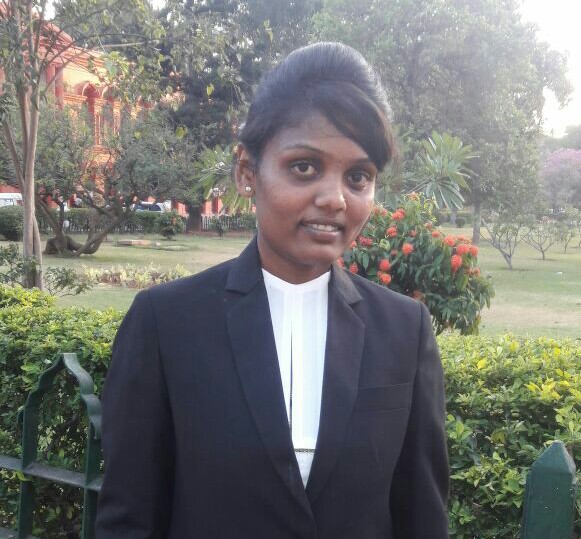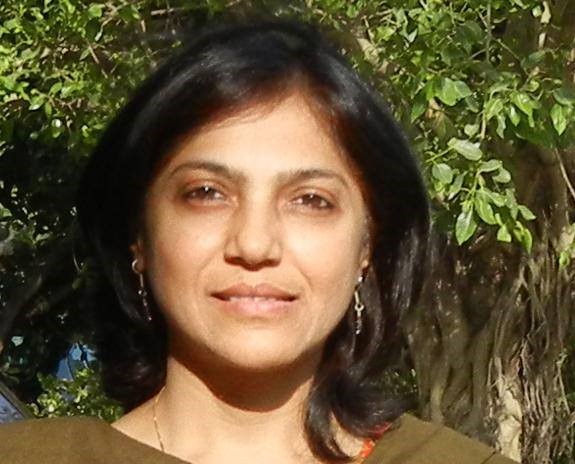Asha Singh
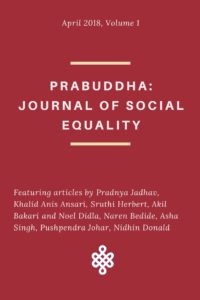 The first issue of Prabuddha: Journal of Social Equality carries research articles and an interview by Dalit Bahujan Women scholars. SAVARI is happy to share excerpts of their articles here.
The first issue of Prabuddha: Journal of Social Equality carries research articles and an interview by Dalit Bahujan Women scholars. SAVARI is happy to share excerpts of their articles here.
This excerpt is from Asha Singh’s article on the relegation of Bhojpuri to Hindi under the journal section of Research Papers. Please read Prabuddha’s About page and Instructions for Authors if you would like to submit articles.
An excerpt from “Conceptualizing Bhojpuri for a National Hindi Elite: Reading the Folklorist Krishna Deva Upadhyaya”
The use of Hindi and its Devangari script to theorize Bhojpuri is not simply a technical or pragmatic choice. It is a result of how Hindi was (and continues to be) perceived as the most suitable language of knowledge production with the emergence of nationalism in this region, under the leadership of an educated Savarna class. Bhojpuri along with Maithali, Magahi, Braj, Avadhi etc. were imagined as sister concerns of Hindi during the Hindi renaissance which corresponded with the rise of nationalism in India.
Thus, Hindi was not simply a detached medium to understand an unscripted ‘Bhojpuri’ but its literary instruments provided the standard to evaluate/analyse Bhojpuri language, people, and region. For example, Bhojpuri folksongs are often compared to Hindi poetry to conclude that the former are broken, incomplete expressions of a non-literate, simple, rural society, which needs to be conserved in its ‘purest form.’ The taken-for-granted primacy of Hindi as a ‘national’ standard is a common feature in Hindi elite scholarship. It is symptomatic of what Andreas Wimmer and Nina Schiller (2002) would call methodological nationalism. Hindi is seen as the most natural language to theorize Bhojpuri, without problematizing its relation with Bhojpuri. In fact, Hindi was seen as a language best suited to make a case for Bhojpuri without any suspicion of national disloyalty.
As we go through the biographical details of ‘mainstream’ Bhojpuri socio-linguists, folklorists and historians one realizes that most of them were Hindi scholars placed within universities and colleges teaching Hindi and Sanskrit. Banaras Hindu University, along with Allahabad and Calcutta University emerge as centers of their deliberations and brain-storming. Krishna Deva Upadhyaya was a doctorate in Hindi literature with deep knowledge of Sanskrit. His brother, Padmabhushan Acharya Baladev Upadhyaya was a renowned Sanskrit and Hindi scholar (See Tripathi 1983). His father, Pandit Ram Suchit Upadhyaya was a Bhagwat Puran scholar. They were all beneficiaries of modern higher education, which initially insisted the knowledge of Sanskrit as essential for ‘Hindu’ students to enter and prosper in newly founded universities. Krishna Deva Upadhyaya was born in Ballia District of Eastern Uttar Pradesh, a product of Banaras Hindu University. He established Bharatiya Lok Sanskriti Shodh Sansthan, Varanasi and organized Bharatiya Lok Sanskriti Conventions in the early decades of post-colonial India. He has been part of several folk culture societies and conferences across the globe.
Thus, Bhojpuri was studied always in allegiance to or in reference to the ‘national’ (and their national was authored in Hindi!). Take a look at how Krishna Deva Upadhyaya (1991) describes Bhojpuri people in his introductory chapters:
भोजपुरी जनता शत-प्रतिशत राष्ट्रीय है. वह समस्त भारत को अपना देश समझती है. इसीलिए यहाँ के निवासी प्रांतीयता, क्षेत्रीयता या स्थानीयता के क्षुद्र बंधनों से बंधना नहीं चाहते. इसी राष्ट्रीय भावना के कारण लगभग छह-सात करोड़ संख्या में विद्यमान होने पर भी भोजपुरियों ने कभी प्रांतीयता के प्रश्न को नहीं उठाया. भोजपुरी लोगों का मूल मंत्र है, यह भारत देश हमारा है, मेरा देश महान, हम भारत की हैं संतान. इस प्रकार जब समस्त देश ही अपना है तब प्रांतीयता अथवा जातीयता की भावना ही कहाँ पैदा हो सकती है. (p. 25)
Bhojpuri people are cent percent national. They consider all of Bharat as their country. Thus, they are not ready to be tied down by the ‘Kshudra’ bonds of regionalism or nativism. This national emotion has stopped Bhojpurias, six to seven crores in population, from ever raising any question of regionalism. The central mantra of bhojpurias is – Bharat is our country, my country is great, and we are the children of this country. In this way, if the whole of Bharat is ours than there can be no question of regionalism or casteism. (my translation)
The national scale is a methodological suicide for the region. Krishna Deva Upadhyaya through his description is providing a template for nationalism. This template can be used on any population, not just the Bhojpurias. For the argument does not answer the question – What is the Bhojpurias relationship with the nation? Rather it answers – What ought to be the Bhojpurias’ relationship with the nation?
Thus, Upadhyaya makes it clear that ‘studying’ Bhojpuri through its folksongs is not done with any intention of ‘denationalization.’ On the other hand, he calls his academic work a contribution to ‘national integration’ like many other scholars of the region. To meet his goal, he characterizes Bhojpuri region as an important site of national cultural production. This imagination is furthered by placing Bhojpuri region within Hindu cosmology and events in the epics of Mahabharata and Ramayana (Upadhaya, 1991, p.24). The aim here is to establish the significance of Bhojpuri language, literature and region within the taken-for-granted national scale in historical and mythical time.
Upadhayaya places Bhojpuri within an ideal ‘national’ space (within its politics and history). Efforts to conceptualize Bhojpuri are pursued as a ‘national’ project. It would be interesting to juxtapose a sociological reading of Upadhayaya’s ‘local’ or ’regional’ stories of song collections which he calls ‘geet anveshan yatra’ with the larger ‘national’ goal of ‘integration’ and ‘conservation of folk culture in Bhojpuri region’ (See Upadhyaya 1999, p.4). These local concerns are symptomatic of the discontents one would have with the ‘national Hindi space.’ Also, it captures the local, scattered, unpleasant journeys through the lives and expressions of women and lower-castes in the region to arrive at the ‘national’ conceptualization of Bhojpuri.
~~~
Reference
Singh, A. (2018). Conceptualizing Bhojpuri for a National Hindi Elite: A Critical Reading of Folklorist Krishna Deva Upadhyaya.Prabuddha: Journal Of Social Equality, 1(1), 33-44. Retrieved from http://prabuddha.us/index.php/pjse/article/view/10
